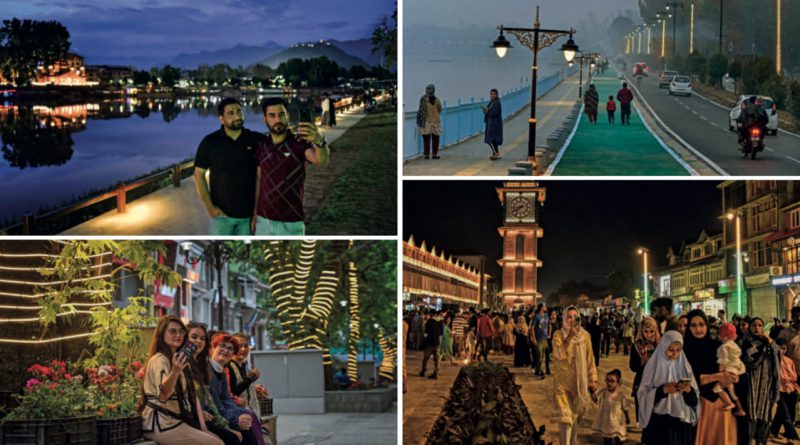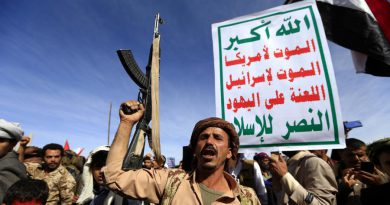OPINION: Two Kashmirs, Two Stories—India Builds, Pakistan Breaks
The truth is stark, data-backed, and irrefutable: India is building lives in Jammu and Kashmir. Pakistan is destroying them in PoJK.
In the ongoing war of narratives between India and Pakistan over Jammu & Kashmir, facts have finally caught up with fiction. While Pakistan peddles a tired tale of prosperity in Pakistan-occupied Jammu and Kashmir (PoJK) and Gilgit-Baltistan (GB), the truth tells a dramatically different story, one of neglect, repression, and economic decay on its side, and of transformation, investment, and democratic inclusion in Indian-administered Jammu and Kashmir.
Budgetary Commitment: India’s Investments Leave Pakistan Behind
Let’s begin with the basics—money.
The development budget for Jammu and Kashmir (J&K) in 2025–26 stands at a remarkable ₹1,12,310 crore (USD 12.9 billion), reflecting India’s strong financial commitment to the region’s growth. In sharp contrast, the Annual Development Programme for Pakistan-occupied Jammu & Kashmir (PoJK) amounts to just PKR 49 billion (USD 1.77 billion).
On a per capita basis, the disparity is even more striking: India allocates approximately USD 1,032 per person in J&K, while Pakistan spends only USD 393 per person in PoJK.
India’s per capita investment in J&K is nearly three times what Pakistan spends in PoJK. That alone exposes the hollowness of Pakistan’s claims of parity or superiority in developmental efforts. These aren’t just numbers; they represent hospitals built, schools upgraded, roads constructed, and lives improved.
Education: A Tale of Two Systems
India has placed a strong emphasis on educational excellence in Jammu & Kashmir, transforming the region into an emerging hub of academic and professional institutions. Today, J&K is home to nine state universities, two central universities, and four Institutes of National Importance—including IIT Jammu, IIM Jammu, NIT Srinagar, and NIFT Srinagar.
The region also boasts eleven medical colleges, fourteen engineering colleges, and two AIIMS campuses—one operational in Samba and another upcoming in Awantipora. In stark contrast, Pakistan-occupied Jammu & Kashmir (PoJK) lags far behind with only seven universities and four medical colleges. Compounding the problem are chronic shortages of qualified faculty, poor remuneration, and mismanaged institutions—conditions that render PoJK’s education system ill-equipped to prepare its youth for the future.
The contrast is equally severe in terms of job creation. In PoJK, youth are either absorbed into the government sector or pushed into the Pakistan Army’s Northern Light Infantry. Meanwhile, in J&K, expanding industry, tourism, and startups are opening up new avenues for educated youth, with the support of central government schemes like Startup India, Digital India, and the Industrial Development Scheme for the UT.
Healthcare: Pakistan’s Neglect, India’s Transformation
Healthcare is another area where Indian-administered Jammu & Kashmir is significantly ahead of its Pakistani-occupied counterpart. With a total of 5,534 health institutions—comprising 4,433 government and 1,101 private facilities—J&K maintains a doctor-patient ratio of 1:1658, reflecting a relatively robust healthcare infrastructure.
In stark contrast, PoJK has only 73 hospitals and health centres, with an alarming doctor-patient ratio of 1:4916, exposing the deep neglect and systemic healthcare crisis in the region under Pakistani control.
J&K’s Infant Mortality Rate (IMR) is 23, three times better than PoJK. In 2023, J&K was declared #1 in India for IMR reduction, slashing it by 8 points in one year. AIIMS, district hospitals, telemedicine, and Ayushman Bharat cards are bridging the last-mile health delivery gap.
By contrast, PoJK residents have to protest for basic access to emergency care, suffer under dilapidated facilities, and rely on non-local doctors due to persistent staff shortages.
Freedom, Democracy & Governance: J&K Joins India; PoJK Remains Pakistan’s Colony
Since the abrogation of Article 370 in 2019, Jammu & Kashmir has been fully and firmly integrated into the constitutional and political framework of India. The region now enjoys full representation in both houses of the Indian Parliament, participates in the nationwide electoral process, and benefits from central welfare schemes on par with other Indian states.
Additionally, the implementation of Panchayati Raj has empowered local governance, bringing decision-making closer to the grassroots and strengthening democratic institutions in the Union Territory.
Meanwhile, PoJK and GB are not even listed in Article 1 of Pakistan’s own Constitution. Their legal status is determined by the highly dubious Karachi Agreement of 1949, signed behind closed doors without any GB representation. PoJK is run via an ‘interim constitution,’ and GB via an executive order, not a law passed by any legislature.
Worse, PoJK’s constitution bans anyone from even questioning its accession to Pakistan. Section 4(7)(3) of the 1974 Act makes any political expression against Pakistan’s claim a punishable offence. This is not democracy, it’s colonialism in disguise.
Discrimination, Repression, and Sectarian Violence
While J&K thrives in a secular, pluralistic democracy, where Muslims, Hindus, Sikhs, and Christians co-exist, PoJK and GB are trapped in systemic discrimination.
In Pakistan-occupied Jammu & Kashmir (PoJK) and Gilgit-Baltistan (GB), religious persecution and sectarian discrimination remain deeply entrenched. Since Ahmadis, are constitutionally declared as non-Muslims in Pakistan, they face daily persecution and systemic exclusion from public life.
In Gilgit-Baltistan, Shia Muslims—despite forming the majority—suffer from state-backed discrimination, targeted killings, and institutional bias. Sectarian violence is alarmingly common, and authorities have repeatedly failed to ensure basic law and order in key areas such as Gilgit, Skardu, and Chilas.
Enforced Disappearances and Suppression of Dissent
While Indian-administered Jammu & Kashmir enjoys a vibrant media landscape, active political debate, and the freedom to protest without fear, Pakistan-occupied Jammu & Kashmir (PoJK) and Gilgit-Baltistan (GB) have become zones of repression for activists and dissenters. Journalists, students, and political figures routinely disappear without a trace, often without any official explanation.
The United Kashmir People’s National Party (UKPNP) and the Awami Action Committee have consistently raised concerns about enforced disappearances and custodial killings. In a chilling incident from May 2025, two young men from PoJK, Zarnosh Naseem and Jibran Naseem, were executed by Pakistani forces and falsely branded as “terrorists,” further intensifying public outrage and highlighting the climate of fear and impunity in the region.
Such acts have triggered widespread unrest. In both 2024 and 2025, mass protests swept across PoJK and GB demanding lower electricity tariffs, subsidised flour, and basic governance. Islamabad responded not with reform, but with detentions, intimidation, and media blackouts.
Infrastructure and Connectivity: A World Apart
India is rapidly connecting Jammu & Kashmir to the rest of the country through a modern transport revolution. The recently inaugurated Chenab Bridge, now the world’s highest railway bridge, stands as a symbol of engineering excellence and integration.
Simultaneously, the Delhi-Amritsar-Katra-Srinagar expressway is progressing at a swift pace, promising seamless travel and economic connectivity. Jammu & Kashmir now boasts over 1.4 lakh kilometers of road network—more than any region with similar terrain—significantly enhancing mobility, trade, and access to essential services.
Meanwhile, in PoJK and GB, poor road infrastructure, irregular power supply, and limited internet access have crippled economic activity. Tourism, which flourishes in Indian J&K, is negligible in PoJK due to insecurity and lack of facilities.
Natural Resources: Looted by Pakistan, Denied to Locals
Despite their mineral richness, PoJK and GB have no control over local resources. Coal, uranium, water, and timber are all exploited by Pakistan’s elite and military-industrial complex. Locals get no royalties, no jobs, and no say.
In Indian J&K, recent policy changes have encouraged local entrepreneurship in mining, horticulture, handicrafts, and IT, with transparent auction processes and guaranteed revenue sharing with panchayats and district bodies.
A Contrast That Can No Longer Be Denied
It’s no longer a contest between two narratives—it’s a contrast between two stark realities. On one side is Jammu & Kashmir: democratic, rapidly developing, and increasingly integrated with the world’s fastest-growing major economy. On the other side lie Pakistan-occupied Jammu & Kashmir (PoJK) and Gilgit-Baltistan, where people are denied basic rights, exploited by the Pakistani state, and left to languish under military domination and a string of broken promises.
Pakistan must stop using PoJK as cannon fodder for its failed Kashmir policy. The world must now call it out for what it is, an occupying force in a region it neither nurtures nor understands.
The truth is stark, data-backed, and irrefutable: India is building lives in Jammu and Kashmir. Pakistan is destroying them in PoJK.
Disclaimer: Views expressed by writers in this section are their own and do not reflect Milli Chronicle’s point-of-view.



